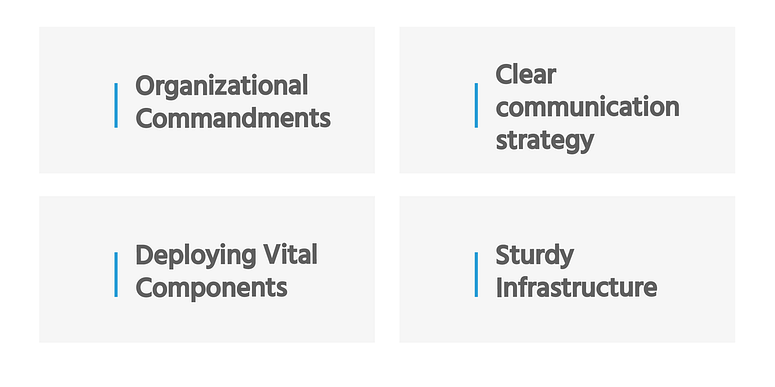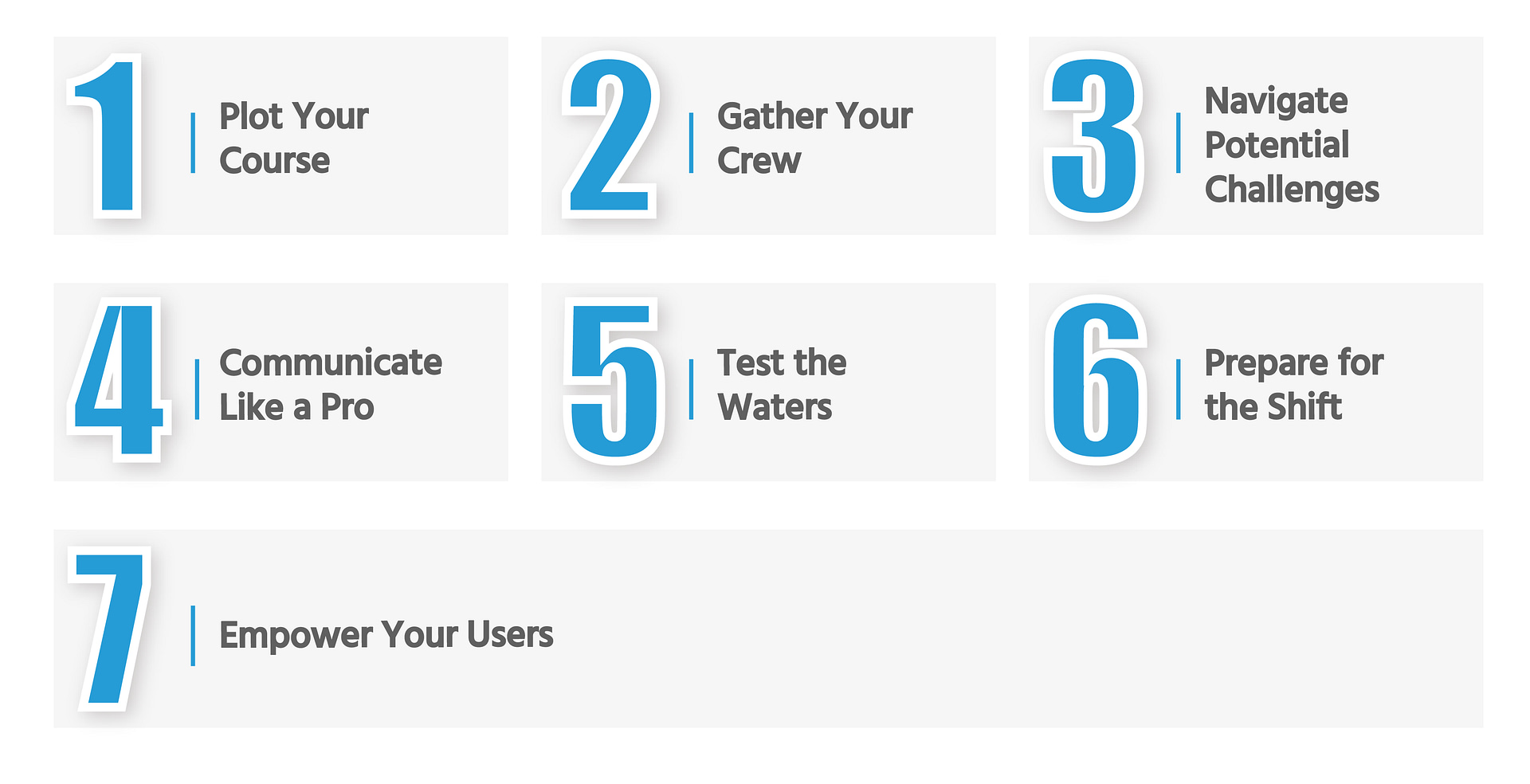As we navigate the landscape of software delivery, we arrive at a pivotal juncture known as project cutover, the critical link between the past and the future.
While this transition might seem effortless, seasoned project leaders understand that cutover is a multifaceted process. As experienced navigators, we acknowledge that true success is only achieved when the entire journey is completed. Join me as we explore the essential aspects of cutover plans and uncover how these seven steps can revolutionize your project outcomes.
Defining a Project Cutover Plan
Before delving into the intricacies of cutover planning, let's grasp the fundamental concepts. Cutover planning marks the pivotal phase that bridges the gap between software project development and production. It signifies the final leg of the journey – the transformation from development to the real-world application. Envision maneuvering through the complexities of deploying components, activating systems, and ensuring a seamless transition from staging to production.
Deployment Plan vs Cutover Plan
Pause and differentiate between deployment and cutover. Deployment plans prepare your team for action, while cutover plans guide the transition – the passage from the old to the new. Picture your deployment plan as the construction of a ship, and the cutover plan as the navigational chart steering you through the expedition.
If you need any help building a Deployment Plan, check our blog article about the 8 Deployment Strategies.
Components of the Cutover Plan

Your cutover plan resembles preparing for a challenging voyage across uncertain waters. It transcends a mere checklist – it's your navigational map leading you through potentially intricate scenarios. Here are the fundamental components:
Organizational Commandments
Every journey commences with a departure time. Similarly, a cutover plan needs a well-defined start and end time. Set the schedule, establish the duration, gather your crew (team members), and lay down guidelines. For instance, implement a "no changes 48 hours before cutover" policy to ensure a smooth journey.
Clear Communication Strategy
Your cutover plan must outline roles, contacts, and backup plans. Designate a communication lead, specify channels for addressing concerns, and ensure everyone comprehends their responsibilities. For instance, identify the point of contact in case a database migration encounters an obstacle.
Deploying Vital Components
Consider these as the sails and rigging of your ship. Your configurations, files, scripts, setups, and data migrations constitute the foundation of cutover success. Pre-tested migration scripts propel you forward.
Sturdy Infrastructure
Guarantee that servers undergo load-testing, networks are optimized, and security measures like firewalls are in position and validated. Ensure your system boasts dependable backup and recovery mechanisms.
By meticulously orchestrating and integrating these components, your cutover journey will be poised for a seamless transition.
Strategic Approach to Cutover Planning

Embarking on a software cutover necessitates a methodical approach. Let's liken it to a sailing compass:
Preparing for Departure
- Crew Briefing: Review the cutover plan, elucidating roles and obligations.
- Inventory Check: Confirm readiness of all scripts, configurations, and backups.
- Weather Forecast: Anticipate potential challenges, such as third-party maintenance schedules.
Setting Sail
- Deployment: Initiate the cutover process – migrating data and activating systems, each task is assigned a distinct owner and timeframe.
- Course Monitoring: Employ real-time feedback to ensure the cutover stays on track.
- Emergency Drills: Be prepared with strategies for reverting in case of unexpected obstacles.
Docking at the Destination
- Post-Deployment Tests: Verify flawless operation of the new system prior to user onboarding.
- Anchoring: Finalize system settings, domain names, and other essential configurations.Onboarding: Educate and guide users about the new system.
Feedback Loops
- Gather Insights: After completion, collect input from the team and users for continuous improvement.
By embracing this strategic approach, your cutover journey will navigate a streamlined transition, leading to a successful outcome.
The Seven Essential Steps for a Successful Cutover Project

1. Plot Your Course
Define precise project objectives and milestones, ensuring everyone comprehends the goals, schedules, and expectations.
2. Gather Your Crew
Gather a proficient team and allocate responsibilities. Match tasks with expertise; whether it's data migration specialists or system architects, ensure everyone leverages their strengths.
3. Navigate Potential Challenges
Identify potential hurdles, strategize solutions beforehand, and ready yourself for unforeseen situations.
4. Communicate Like a Pro
Transparency is key. Regularly update stakeholders using tools like Atlassian's Jira and Confluence to ensure alignment.
5. Test the Waters
A robust cutover plan is resilient. Conduct thorough system tests, encompassing load testing and integration checks.
6. Prepare for the shift
Conduct mock cutover exercises to familiarize the team and uncover unforeseen challenges.
7. Empower Your Users
Provide training sessions and resources to equip users with knowledge, ensuring a smooth transition to the new system.By adhering to these steps, your software cutover experience will be structured, well-informed, and remarkably smooth.
In Conclusion
In software projects, the cutover phase resembles guiding a ship from the shipyard into open waters. Crafting and executing a comprehensive cutover plan serves as your guiding compass for a successful journey.
Remember, a well-structured cutover plan coupled with transparent communication streamlines the transition and ensures a triumphant voyage. As you embark on future projects, keep these lessons close, allowing your cutover plan to steer you towards a successful destination.
Transform your Test Environment Management with Apwide Golive:
Leading companies have already Golive as part of their DevOps toolchain:





Free trial / Free forever up to 10 Jira Cloud users!
